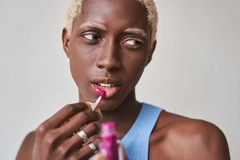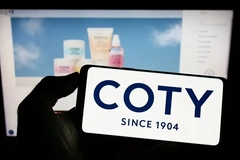EU scientific committee warns of titanium dioxide’s potential genotoxicity in oral cosmetics

28 May 2024 --- The Scientific Committee on Consumer Safety (SCCS) finds potential genotoxicity concerns in its final opinion on the safety of titanium dioxide (TiO2) in oral cosmetic products.
After analyzing data on 44 pigmentary and 40 nano grades of TiO2 used in cosmetics, the SCCS concluded that the evidence is insufficient to rule out the possibility of genotoxicity for most TiO2 grades in these products.
While most TiO2 grades showed possible hazards, two nano grades, RM09 and RM11, exhibited “no genotoxicity concerns,” according to the assessment. However, they say more information on their absorption and cellular effects in the oral mucosa (soft tissue in the mouth) is needed.
The SCCS looked at studies, including those conducted by the European Food Safety Authority (EFSA).
Risk assessment: Cosmetic and food
Since cosmetics are not meant to be consumed, the SCCS uses a different risk assessment method than the EFSA.
 Further investigations are needed to assess the long-term risks of daily exposure to TiO2 nanoparticles.As a result, ingesting TiO2 from oral cosmetics would be accidental and occur in smaller quantities than from food items. However, the potential for TiO2 nanoparticle “absorption, retention and adverse effects in the buccal mucosa” continues to be an important safety concern for the SCCS.
Further investigations are needed to assess the long-term risks of daily exposure to TiO2 nanoparticles.As a result, ingesting TiO2 from oral cosmetics would be accidental and occur in smaller quantities than from food items. However, the potential for TiO2 nanoparticle “absorption, retention and adverse effects in the buccal mucosa” continues to be an important safety concern for the SCCS.
The committee also notes: “The [cosmetic] pigmentary grades differ from the food additive E171 in terms of crystalline forms, particle sizes and coatings, with the exception of 13 uncoated pigmentary grades that can be considered as equivalent to E171.”
New considerations
The SCCS advises that nanoparticles in cosmetics should be considered when evaluating the safety of pigmentary TiO2 grades since they can make up more than 50% of the particle count.
Besides concerns about oral exposure, the SCCS considers its previous opinions on inhalation and dermal exposure to TiO2. The committee concluded that those assessments on dermal application remain unchanged for the newly evaluated TiO2 grades and coatings.
However, the body says new dermal absorption data are required for other TiO2 types not covered under the EU Cosmetics Regulation.
Annex VI of the Cosmetics Regulation restricts the use of TiO2 nanoform in applications that could expose users to inhalation. The SCCS affirmed that previous opinions on TiO2 safety for inhalation also remain valid.
Concerns over recommendations
The SCCS declined to recommend safe concentration limits for TiO2 in oral or inhalation-exposure cosmetics other than those outlined in earlier opinions due to the unresolved genotoxicity risks.
 The SCCS review raises concerns over the genotoxicity potential of titanium dioxide in oral cosmetic products.The committee underlined that applicants must submit specifications for the TiO2 grades in cosmetics to prevent such exposures, and the SCCS is prepared to help with the proposal review process.
The SCCS review raises concerns over the genotoxicity potential of titanium dioxide in oral cosmetic products.The committee underlined that applicants must submit specifications for the TiO2 grades in cosmetics to prevent such exposures, and the SCCS is prepared to help with the proposal review process.
Moreover, the SCCS expressed further scientific concerns about the long-term exposure of oral mucosal cells to TiO2 nanoparticles. Studies have shown that these cells are prone to absorbing nanoparticles, which could be dangerous if products like toothpaste containing TiO2 are used frequently or daily.
Therefore, the committee urges more investigations to exclude long-term risks from repeated nanoparticle exposure.
TiO2 in news
In white pigment innovation, we spoke to the CEO of Finnish Innomost, which launched Betuinno. Betulin, a “sustainable and biodegradable” replacement for TiO2, from upcycled birch bark from certified forest industry side streams.
However, Innova Market Insights data suggests that cosmetic colorants are rising globally, growing 7% yearly between July 2021 and June 2023, with TiO2 as the star ingredient (92%).
Last year, the French government appealed the EU General Court’s judgment annulling the classification of TiO2 as a suspected carcinogen when inhaled or consumed in powder form.
By Venya Patel












